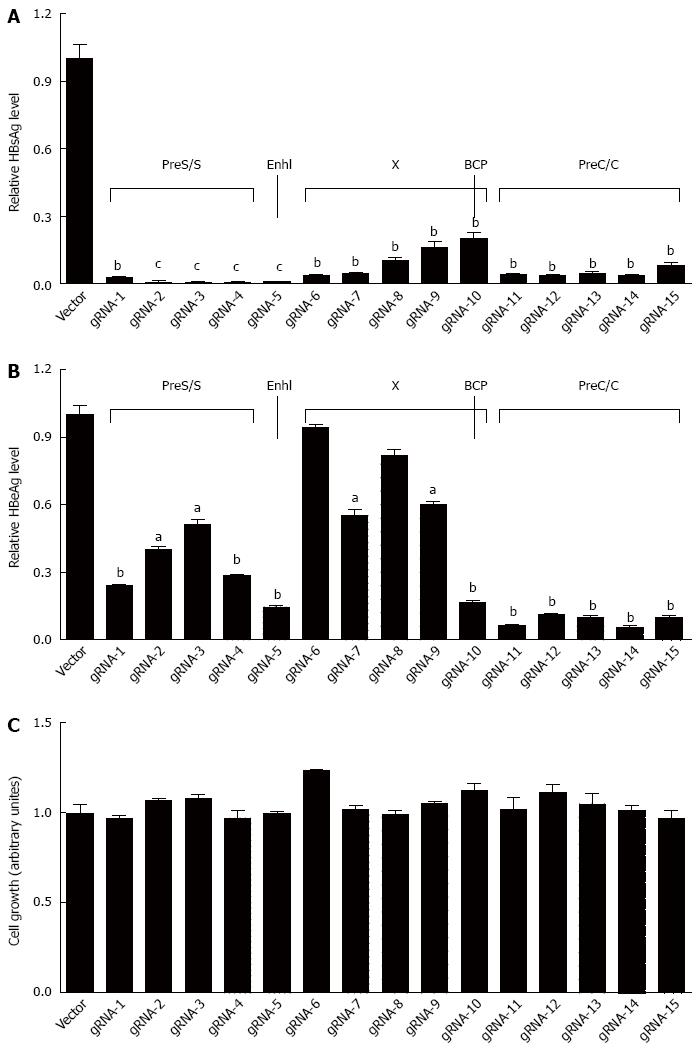Copyright
©The Author(s) 2015.
World J Gastroenterol. Aug 28, 2015; 21(32): 9554-9565
Published online Aug 28, 2015. doi: 10.3748/wjg.v21.i32.9554
Published online Aug 28, 2015. doi: 10.3748/wjg.v21.i32.9554
Figure 2 Fifteen hepatitis B virus-specific gRNAs could efficiently suppress the production of hepatitis B virus surface antigen or hepatitis B virus e antigen.
A: The plasmid pBB4.5-HBV1.2 (0.5 μg) was co-transfected with each individual gRNA/Cas9 dual expression vector (1.5 μg) to HuH-7 cells. HBsAg level in culture supernatant was measured at 72 h post transfection using a time-resolved fluoroimmunoassay analysis; B: HBeAg level in culture supernatant was measured using a time-resolved fluoroimmunoassay analysis as above; C: The cytotoxicity of each HBV-specific gRNA was examined using an MTT assay. Data are shown as mean ± SE of 5 independent experiments. All P-values are from Student’s t-test. HBV: Hepatitis B virus; HBsAg: Hepatitis B virus surface antigen; HBeAg: Hepatitis B virus e antigen; MTT: Methyl thiazolyl tetrazolium. aP < 0.05, bP < 0.01, cP < 0.001.
- Citation: Wang J, Xu ZW, Liu S, Zhang RY, Ding SL, Xie XM, Long L, Chen XM, Zhuang H, Lu FM. Dual gRNAs guided CRISPR/Cas9 system inhibits hepatitis B virus replication. World J Gastroenterol 2015; 21(32): 9554-9565
- URL: https://www.wjgnet.com/1007-9327/full/v21/i32/9554.htm
- DOI: https://dx.doi.org/10.3748/wjg.v21.i32.9554









